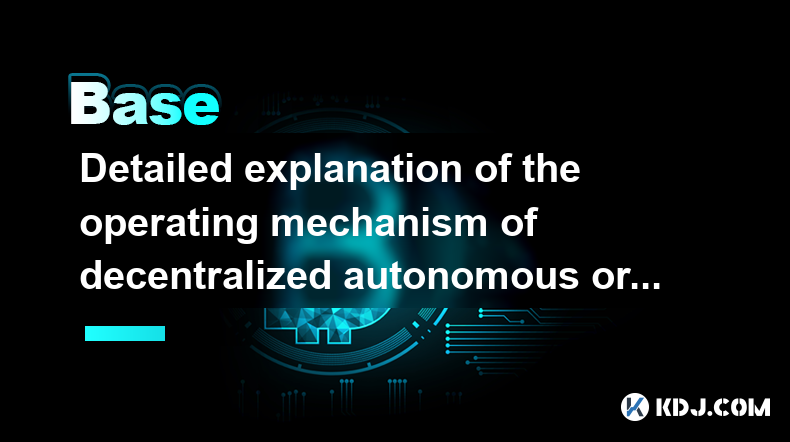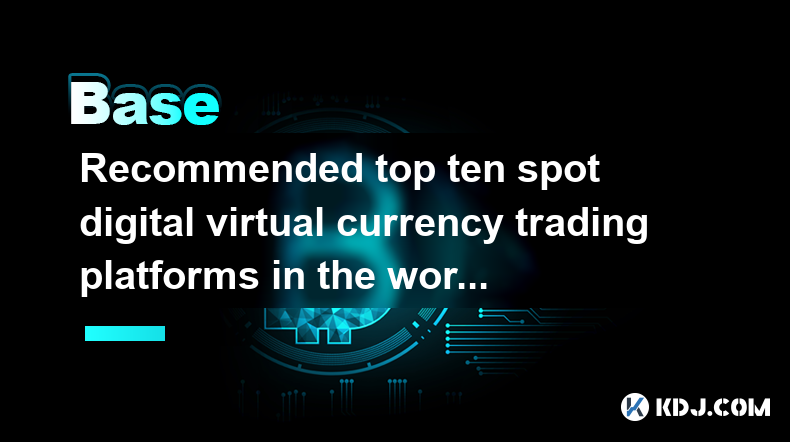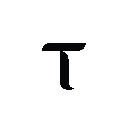-
 Bitcoin
Bitcoin $87,637.3009
3.62% -
 Ethereum
Ethereum $1,619.6345
2.40% -
 Tether USDt
Tether USDt $0.9997
-0.02% -
 XRP
XRP $2.1149
2.87% -
 BNB
BNB $602.1762
2.09% -
 Solana
Solana $137.8253
0.20% -
 USDC
USDC $0.9996
-0.04% -
 Dogecoin
Dogecoin $0.1607
4.00% -
 TRON
TRON $0.2420
-1.26% -
 Cardano
Cardano $0.6419
4.18% -
 Chainlink
Chainlink $13.4026
2.77% -
 Avalanche
Avalanche $20.3782
4.92% -
 UNUS SED LEO
UNUS SED LEO $9.0084
-3.44% -
 Stellar
Stellar $0.2566
6.15% -
 Toncoin
Toncoin $3.0111
1.38% -
 Shiba Inu
Shiba Inu $0.0...01251
1.78% -
 Sui
Sui $2.2326
5.85% -
 Hedera
Hedera $0.1696
4.46% -
 Bitcoin Cash
Bitcoin Cash $337.7284
0.90% -
 Polkadot
Polkadot $3.8972
1.25% -
 Litecoin
Litecoin $79.9963
5.10% -
 Hyperliquid
Hyperliquid $18.0042
2.62% -
 Dai
Dai $0.9999
0.00% -
 Bitget Token
Bitget Token $4.4458
2.27% -
 Ethena USDe
Ethena USDe $0.9992
-0.01% -
 Pi
Pi $0.6361
1.22% -
 Monero
Monero $215.1319
-0.70% -
 Uniswap
Uniswap $5.4058
3.91% -
 Pepe
Pepe $0.0...07908
6.59% -
 Aptos
Aptos $5.1454
2.71%
Detailed explanation of the operating mechanism of decentralized autonomous organizations (DAO)
DAOs use smart contracts on blockchains for autonomous operation, tokenized governance, and transparent treasury management, enabling community-driven decision-making.
Mar 29, 2025 at 10:21 am

Understanding the Core Principles of DAOs
Decentralized Autonomous Organizations (DAOs) represent a novel organizational structure leveraging blockchain technology. Unlike traditional organizations with centralized control, DAOs operate autonomously based on pre-programmed rules encoded in smart contracts. These smart contracts, residing on a blockchain, govern all aspects of the DAO's operations, from treasury management to proposal voting. This eliminates the need for intermediaries, fostering transparency and immutability.
The Role of Smart Contracts in DAO Functionality
Smart contracts are the backbone of any DAO. They are self-executing contracts with the terms of the agreement directly written into lines of code. These contracts automatically execute actions when predetermined conditions are met, ensuring transparency and eliminating the possibility of human error or manipulation. For example, a smart contract might automatically distribute funds to members based on their contributions or execute a proposal once it receives sufficient votes. The immutability of blockchain technology ensures the integrity of these contracts.
Tokenized Governance and Participation in DAOs
Most DAOs utilize tokens to facilitate governance and participation. These tokens often grant holders voting rights on proposals affecting the DAO. The number of tokens held typically correlates with the voting power of the holder. This tokenized governance model allows for a distributed decision-making process, where community members collectively shape the DAO's direction. The distribution of tokens can vary, with some DAOs employing airdrops, while others use token sales to raise capital and distribute governance rights.
The Voting Process within a DAO
The voting mechanism is a crucial aspect of a DAO's operation. Proposals are typically submitted by members and then put to a vote. The voting process itself is often governed by the smart contract, defining the quorum required for a proposal to pass, the voting period, and the voting weight assigned to each token holder. Different voting systems can be employed, including simple majority voting, weighted voting, and quadratic voting, each with its own advantages and disadvantages. Transparency is key, with all votes recorded on the blockchain for public scrutiny.
Managing the DAO's Treasury
DAOs often manage a treasury of funds, typically held in cryptocurrency. The smart contract dictates how these funds can be accessed and spent. Proposals for fund allocation must typically go through the voting process, ensuring community consensus on expenditures. This transparent treasury management fosters accountability and prevents misuse of funds. The specific mechanisms for treasury management vary depending on the DAO's structure and governance model.
Handling Disputes and Conflicts within a DAO
Disputes and conflicts can arise within any organization, and DAOs are no exception. The resolution of these disputes often depends on the DAO's governance structure and the rules outlined in its smart contracts. Some DAOs may employ arbitration mechanisms or dispute resolution processes defined within their smart contracts. Others may rely on community consensus to resolve disagreements. The transparency of the blockchain can help to clarify disputes by providing a clear record of events.
Evolution and Adaptability of DAOs
One of the strengths of DAOs is their ability to adapt and evolve over time. Changes to the DAO's rules and governance mechanisms can be proposed and voted upon by members. This adaptability allows DAOs to respond to changing circumstances and community needs, fostering longevity and resilience. This flexibility contrasts sharply with the rigidity of traditional organizational structures.
The Development and Deployment of DAO Smart Contracts
Creating a functional DAO requires careful planning and execution. The process involves:
- Defining the DAO's purpose and governance structure: This crucial first step establishes the core principles and objectives of the DAO.
- Designing the smart contracts: This involves specifying the rules and logic governing the DAO's operations, including voting mechanisms, treasury management, and membership rules.
- Auditing the smart contracts: A thorough audit is essential to identify and rectify potential vulnerabilities in the smart contracts before deployment. This mitigates risks associated with security breaches.
- Deploying the smart contracts to a blockchain: Once audited, the smart contracts are deployed to a suitable blockchain network, making them publicly accessible and immutable.
- Testing and refinement: After deployment, the DAO should be thoroughly tested to ensure its functionality and identify any unforeseen issues.
Security Considerations in DAO Operations
Security is paramount in the operation of a DAO. Smart contracts are susceptible to vulnerabilities if not carefully designed and audited. Exploits can lead to significant financial losses or disruption of the DAO's operations. Thorough audits by reputable security firms are essential to mitigate these risks. Furthermore, keeping the DAO's software updated and addressing any identified vulnerabilities promptly is crucial for maintaining security.
Scalability Challenges in DAO Operations
As DAOs grow in size and complexity, scalability can become a challenge. Processing a large number of transactions and votes can strain the blockchain network, potentially leading to delays and increased costs. Solutions such as layer-2 scaling solutions or the use of more efficient consensus mechanisms are being explored to address these challenges. The choice of blockchain network also significantly impacts the scalability of the DAO.
The Future of DAOs and their Potential Impact
DAOs hold immense potential to revolutionize organizational structures across various sectors. Their decentralized, transparent, and autonomous nature offers significant advantages over traditional organizations. However, the technology is still evolving, and challenges remain in areas such as scalability, security, and regulatory compliance. The future of DAOs will depend on overcoming these challenges and realizing their full potential.
Frequently Asked Questions
Q: What are the benefits of using a DAO over a traditional organization?
A: DAOs offer transparency through on-chain records, autonomous operation via smart contracts, and community-driven governance, reducing reliance on centralized authority.
Q: What are the risks associated with DAOs?
A: Smart contract vulnerabilities, governance issues, and regulatory uncertainty are key risks. Poorly designed smart contracts can be exploited, leading to financial loss.
Q: How can I participate in a DAO?
A: Participation usually involves acquiring the DAO's governance token, allowing voting rights on proposals. Specific participation methods vary between DAOs.
Q: What types of decisions are made through DAO voting?
A: DAOs use voting for various decisions, including treasury allocation, project funding, changes to the DAO's rules, and the selection of new members.
Q: Are DAOs legal?
A: The legal status of DAOs is still evolving and varies by jurisdiction. Regulatory clarity is still developing in many parts of the world.
Disclaimer:info@kdj.com
The information provided is not trading advice. kdj.com does not assume any responsibility for any investments made based on the information provided in this article. Cryptocurrencies are highly volatile and it is highly recommended that you invest with caution after thorough research!
If you believe that the content used on this website infringes your copyright, please contact us immediately (info@kdj.com) and we will delete it promptly.
- Atok Partners with Bitgert to Advance Infrastructure and Advertising Economy in Web3 World
- 2025-04-21 23:00:13
- Pi Network (PI) Coin Could Be the Next Cryptocurrency to Launch an Exchange Traded Fund (ETF)
- 2025-04-21 23:00:13
- Strategy, the world's largest corporate Bitcoin holder, has purchased 6,556 BTC for $555.8 million
- 2025-04-21 22:55:13
- Bitcoin (BTC) Price Prediction: Arthur Hayes Hints at a Final Opportunity to Buy BTC Under $100K
- 2025-04-21 22:55:13
- Binance Adds ZORA to Spotlight Projects on Binance Alpha Alongside Other Names
- 2025-04-21 22:50:12
- Bitcoin (BTC) Price Prediction: BTC Surges Nearly 5%
- 2025-04-21 22:50:12
Related knowledge

Recommended top ten spot digital virtual currency trading platforms in the world in 2025
Apr 21,2025 at 05:15pm
Recommended top ten spot digital virtual currency trading platforms in the world in 2025 1. Binance As the world's premier cryptocurrency trading platform, Binance is known for its extensive trading pairs and efficient trading services. Its features include: High Liquidity : Binance has huge trading volumes, ensuring users can trade at the best pric...

Ranking of top ten virtual currency trading apps in the currency circle (the latest authoritative list in 2025)
Apr 21,2025 at 10:28pm
The top ten virtual currency trading apps in the 2025 cryptocurrency circle are listed as follows: 1. Binance Binance is one of the world's leading cryptocurrency trading platforms, known for its efficient trading system and extensive currency support. Binance's user interface is designed with simplicity and is suitable for beginners and profess...

What are the digital currency APP trading software in 2025? Ranking of the top ten digital virtual currency trading apps
Apr 21,2025 at 08:42pm
Ranking of the top ten digital virtual currency trading apps in 2025 1. Binance Binance continues to maintain its position as the world's leading digital currency trading platform in 2025. Its advantages include: Efficient trading volume : Binance has top trading volumes around the world, ensuring users can trade efficiently at any time. Diverse tra...

Ranking of the top ten cryptocurrency trading apps in the currency circle in 2025
Apr 21,2025 at 08:49pm
Ranking of the three major virtual currency trading applications in the currency circle Binance: The world's leading cryptocurrency trading platform Binance has always been one of the pioneers in the cryptocurrency trading world. With its huge trading volume and a wide user base, it has become one of the most popular trading platforms in the world. ...

Top 10 best virtual currency trading platforms in the world ranked latest rankings for 2025
Apr 21,2025 at 10:00pm
Top 10 Most Popular Virtual Currency Trading Platforms in the World 1.Binance Binance is one of the world's leading cryptocurrency trading platforms, and is popular for its high liquidity and rich trading pairs. Binance supports over 500 cryptocurrencies and provides fiat currency deposit and cash withdrawal services. The platform interface is user-...

A list of the top ten digital currency trading apps in the world (2025 professional authoritative list)
Apr 21,2025 at 04:00pm
A list of the top ten digital currency trading applications in the world 1. Binance As the world's largest digital currency trading platform, Binance ranks first with its huge trading volume and rich trading pairs. Binance not only supports a variety of digital currency trading, but also provides a variety of services such as leveraged trading, futu...

Recommended top ten spot digital virtual currency trading platforms in the world in 2025
Apr 21,2025 at 05:15pm
Recommended top ten spot digital virtual currency trading platforms in the world in 2025 1. Binance As the world's premier cryptocurrency trading platform, Binance is known for its extensive trading pairs and efficient trading services. Its features include: High Liquidity : Binance has huge trading volumes, ensuring users can trade at the best pric...

Ranking of top ten virtual currency trading apps in the currency circle (the latest authoritative list in 2025)
Apr 21,2025 at 10:28pm
The top ten virtual currency trading apps in the 2025 cryptocurrency circle are listed as follows: 1. Binance Binance is one of the world's leading cryptocurrency trading platforms, known for its efficient trading system and extensive currency support. Binance's user interface is designed with simplicity and is suitable for beginners and profess...

What are the digital currency APP trading software in 2025? Ranking of the top ten digital virtual currency trading apps
Apr 21,2025 at 08:42pm
Ranking of the top ten digital virtual currency trading apps in 2025 1. Binance Binance continues to maintain its position as the world's leading digital currency trading platform in 2025. Its advantages include: Efficient trading volume : Binance has top trading volumes around the world, ensuring users can trade efficiently at any time. Diverse tra...

Ranking of the top ten cryptocurrency trading apps in the currency circle in 2025
Apr 21,2025 at 08:49pm
Ranking of the three major virtual currency trading applications in the currency circle Binance: The world's leading cryptocurrency trading platform Binance has always been one of the pioneers in the cryptocurrency trading world. With its huge trading volume and a wide user base, it has become one of the most popular trading platforms in the world. ...

Top 10 best virtual currency trading platforms in the world ranked latest rankings for 2025
Apr 21,2025 at 10:00pm
Top 10 Most Popular Virtual Currency Trading Platforms in the World 1.Binance Binance is one of the world's leading cryptocurrency trading platforms, and is popular for its high liquidity and rich trading pairs. Binance supports over 500 cryptocurrencies and provides fiat currency deposit and cash withdrawal services. The platform interface is user-...

A list of the top ten digital currency trading apps in the world (2025 professional authoritative list)
Apr 21,2025 at 04:00pm
A list of the top ten digital currency trading applications in the world 1. Binance As the world's largest digital currency trading platform, Binance ranks first with its huge trading volume and rich trading pairs. Binance not only supports a variety of digital currency trading, but also provides a variety of services such as leveraged trading, futu...
See all articles






















































































